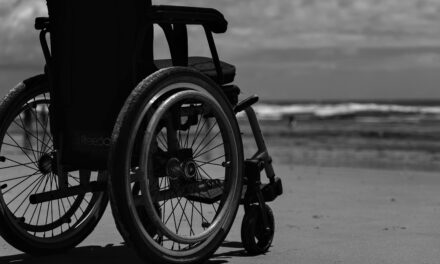
Unmasking the Risks of Lane Splitting in Motorcycle Accidents

Lane splitting, the practice of riding a motorcycle between lanes of stopped or slow-moving traffic, is a controversial topic with potential risks and benefits. While lane splitting is legal in some jurisdictions, it presents inherent dangers that riders should be aware of. In this article, we will unmask the Risks of Lane Splitting in Moto-Accidents, providing a balanced perspective to help riders make informed decisions.
Reduced Space and Increased Vulnerability
Lane splitting reduces the space available for a motorcycle to maneuver between vehicles. This limited space increases the risk of collisions with other vehicles or obstacles. Additionally, motorcycles engaging in lane splitting are more vulnerable to sudden movements or lane changes by surrounding vehicles, which can result in accidents.
Visibility Challenges
Lane splitting can present visibility challenges for both motorcyclists and other drivers. In some cases, drivers may not expect or anticipate motorcycles riding between lanes, especially if they are distracted or not checking their mirrors adequately. This lack of awareness increases the risk of collisions and highlights the importance of cautious riding and constant vigilance.
Increased Risk of Sideswipe Accidents
Sideswipe accidents are a significant concern during lane splitting. When motorcycles travel between lanes, there is a higher likelihood of contact with other vehicles. Drivers may unintentionally change lanes, unaware that a motorcycle is riding alongside them, resulting in dangerous sideswipe collisions. Even a minor sideswipe can lead to loss of control and severe injuries for the motorcyclist.
Speed Differential
Lane splitting often involves a speed differential between the motorcycle and the surrounding traffic. If the motorcyclist is moving significantly faster than the adjacent vehicles, there is a higher risk of accidents due to limited reaction time for both the rider and other drivers. The speed differential can increase the severity of collisions and reduce the margin of error in avoiding accidents.
Legal and Perception : Lane Splitting in Moto-Accidents
Lane splitting is not legal in all jurisdictions, and where it is legal, there may be specific regulations and guidelines in place. Riders must be aware of the laws and regulations governing lane splitting in their area. Additionally, lane splitting can create a negative perception among other drivers, potentially leading to aggression, road rage, or intentional blocking of the motorcyclist’s path, further increasing the risk of accidents.
Safe Lane Splitting Practices to prevent Moto-Accidents
If lane splitting is legal in your jurisdiction and you choose to engage in this practice, it is essential to follow safe lane splitting practices to minimize the risks:
- Ride at a safe and reasonable speed: Maintain a speed that is appropriate for the traffic conditions and
allows sufficient time to react to unexpected situations. - Be aware of your surroundings: Constantly scan for potential hazards, including vehicles changing lanes or
opening doors. - Choose the right gaps: Only split lanes when there is enough space to safely maneuver through the traffic.
Avoid tight gaps or moving between large vehicles. - Use caution during high-risk situations: Exercise extra caution during high-risk situations, such as
intersections, curves, or during adverse weather conditions. - Be visible: Use your headlights, signal intentions clearly, and wear brightly colored or reflective gear to
enhance your visibility to other drivers.
Conclusion
Lane splitting in moto-accidents carries inherent risks that riders should carefully consider. Increased vulnerability, reduced space, visibility challenges, and the potential for sideswipe accidents are factors to take into account. If you choose to engage in lane splitting where it is legal, adopting safe practices and remaining vigilant can help mitigate the risks associated with this practice.








